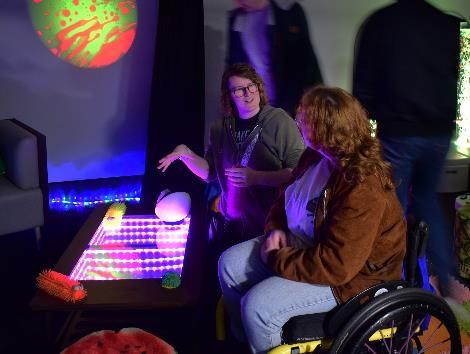
It’s based at the Penrhyn Road campus and is the culmination of a two-year project.
The room includes a high stimulation pod featuring fibre optics, laser projections and bean bags.
But crucially, there is also a low stimulation pod which provides a dimly lit, peaceful space with minimal sensory input.
The Autism Peer Network was instrumental in the development, with Kingston University graduate Rachel Crossley-Watters among those involved. “We visited universities with sensory rooms, who were incredibly welcoming and really useful in explaining the benefits their sensory environments have provided their students,” she said.
“We also examined the non-graduate statistics of neurodivergent students specifically. It was shocking to see that even students who were capable, were not graduating,” Crossley-Watters said. “The statistics that came out were eye-opening and it really did demonstrate how much benefit it could bring to autistic and neurodivergent students.”
PhD student Charlie Wilson, who is currently researching autism representation in modern film and television, highlighted the practical need for the space based on personal experience. “A lot of students lack the space to actually be themselves. There is a large neurodivergent community at the University, especially within Kingston School of Art,” they said. “Previously we have not had a space to regulate ourselves, in a quiet place with low level lighting, having access to this sensory room where I can come and get my work done is revolutionary for me.”



